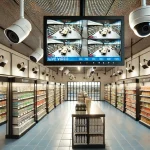Selecting the ideal video surveillance system for your business can feel overwhelming, with countless options available and many factors to consider. However, finding the right system is important for protecting your assets, monitoring operations, and ensuring safety. Whether you’re weighing the merits of open versus closed systems or figuring out which features best fit your needs, this guide will walk you through the key considerations.
Understanding Open vs. Closed Video Surveillance Systems
When it comes to video surveillance, the first major decision is whether to choose an open or closed system. Each has its pros and cons, and the choice depends on your specific needs and long-term plans for your business.
Open Systems: Flexibility and Interoperability
Open systems are designed to be versatile, working with cameras and recorders from various manufacturers. This is possible because they adhere to industry standards like ONVIF (Open Network Video Interface Forum), which allows compatibility between different brands. Open systems provide several advantages:
- Scalability: With an open system, you can mix and match devices to suit your evolving needs. Want to add new cameras or upgrade your recorder? An open system makes it easy, without locking you into a single brand.
- Customizability: You can select devices that meet specific requirements, such as low-light performance, high resolution, or robust outdoor durability.
- Future-Proofing: Technology evolves rapidly, and an open system allows you to incorporate new devices and features as they become available, without replacing your entire setup.
Closed Systems: Simplicity at a Cost
Closed systems are proprietary setups that work exclusively with components from the same brand. Examples of closed systems might only work if you stick with their ecosystem.
- Ease of Use: Since all devices are from the same brand, closed systems are often easier to set up and manage. The components are designed to work seamlessly together, which can streamline installation and reduce technical issues.
- Integrated Features: Closed systems typically come with user-friendly apps and software, providing remote access, notifications, and other advanced features right out of the box.
- Limited Flexibility: However, closed systems can become problematic if you stop paying subscription fees. In some cases, access to essential features or even the camera functionality itself may be restricted, a scenario known as “Hostage-as-a-Service.”
Assessing Your Business Needs
Knowing what you need from a video surveillance system can help you make a more informed decision. Here are a few factors to consider:
1. Size and Layout of Your Space
The physical size and layout of your business significantly impact your surveillance needs. For a small retail store, you might only need a handful of cameras focused on entry points and cash registers. Larger spaces, like warehouses, will require more extensive coverage, including both indoor and outdoor monitoring.
2. Coverage Requirements
Think about the specific areas that need monitoring. Do you need to cover entrances, exits, high-traffic areas, or outdoor spaces? An open system allows you to mix and match camera types, such as dome cameras for wide areas or bullet cameras for long-range outdoor views.
3. Image Quality Needs
The clarity of your surveillance footage is another crucial consideration. If you need to identify individuals or capture detailed images of inventory or vehicles, consider higher-resolution options, such as 4K cameras. Open systems often offer a broader range of options for image quality, while closed systems may limit you to their standard offerings.
Evaluating System Features
Once you know your basic requirements, it’s time to delve into specific features that can enhance the effectiveness of your video surveillance system.
Remote Monitoring Capabilities
Remote monitoring is a game-changer for business owners who want to keep an eye on their property anytime, anywhere. This feature allows you to view live video feeds on your smartphone, tablet, or computer, offering peace of mind and real-time awareness.
Storage Options: Local vs. Cloud
Decide whether you prefer local storage using Network Video Recorders (NVRs) or cloud-based solutions. Local storage provides direct control over your footage without recurring fees, but cloud storage offers greater accessibility and backup security. Remember, closed systems often include cloud storage but may require subscriptions to access your footage.
Expandability for Future Growth
A business that plans to expand should choose a system that can grow with it. Open systems offer excellent expandability, as they allow you to add devices from any compatible manufacturer, whereas closed systems might restrict you to proprietary products and services.
Budget Considerations
Video surveillance systems vary widely in cost, and your budget plays a significant role in determining which system suits you best. Here’s what to consider:
1. Upfront Costs
Open systems typically require a higher initial investment since you need to purchase individual components from different brands. Closed systems, on the other hand, may offer bundled pricing for cameras, recorders, and software, which can lower upfront costs.
2. Ongoing Expenses
With open systems, you can avoid mandatory subscription fees. Closed systems often come with ongoing costs, particularly for cloud storage, remote access, and customer support. Failing to pay these fees can lead to restricted access or limited functionality, so consider this in your long-term budget.
3. Maintenance and Support
Routine maintenance is crucial to keeping your system in peak condition. Both open and closed systems may offer service plans, but you should review the costs and scope of these services. A well-maintained system is essential for minimizing downtime and maximizing your investment.
Ensuring Compatibility and Integration
The last thing you want is a surveillance system that doesn’t work well with your existing security setup. Here are some aspects to consider:
1. Compatibility with Existing Security Measures
If you already have security features like access control, alarm systems, or remote monitoring, ensure that your new video surveillance system can integrate smoothly. Open systems typically offer better compatibility with third-party devices and software, allowing you to create a cohesive security solution.
2. Future-Proofing Your Investment
Technological advancements can quickly make your system outdated. Open systems, with their ability to accommodate new products and features, tend to offer better long-term viability. You don’t want to invest in a closed system, only to find it lacks support for newer technologies down the road.
Maintaining and Supporting Your Video Surveillance System
Maintenance and support play critical roles in the overall effectiveness of your video surveillance system. Here’s what you need to consider to ensure your system remains reliable over time.
1. Regular Software Updates
Open systems may require periodic software updates to maintain compatibility and security. Ensure your provider offers consistent updates to keep your system functioning optimally.
2. Customer Support
While closed systems often include dedicated customer support, this may come at an extra cost. It’s essential to know what support services are available and included in your plan.
3. Hardware Maintenance
Surveillance cameras and related equipment need routine care. Cleaning camera lenses, checking cables, and testing connectivity are vital tasks that help prevent potential malfunctions. Many providers offer maintenance packages that include these services, helping you avoid unexpected breakdowns.
Making the Final Decision
Understanding your unique business needs, including the physical layout, coverage requirements, and budget, will help you determine the best choice for your business. By taking a strategic approach and considering both immediate and future needs, you can select a video surveillance system that provides reliable security, integrates with your existing setup, and grows with your business.
Secure Your Business with Live Patrol’s Video Surveillance Solutions
At Live Patrol, we specialize in offering top-tier remote live video monitoring that goes beyond standard security systems. We understand that choosing the right video surveillance system is crucial for maintaining the safety of your assets and personnel. That’s why we provide customized solutions that align perfectly with your unique needs.
Our AI-powered technology, combined with our expert monitoring services, delivers a security experience like no other. With services ranging from remote video monitoring and access control to remote concierge and time-lapse videos, we’ve got you covered. Our systems are designed for seamless integration, whether you operate a construction site, high-rise residential building, or commercial business.
Experience peace of mind with Live Patrol’s innovative surveillance solutions, which offer instant alerts, around-the-clock monitoring, and detailed reporting. Protect your business today with a system that is flexible, future-proof, and optimized for performance. Get in touch with our team now to learn more about how Live Patrol can elevate your security. Call us at 416-477-3350 or email us at info@livepatrol.com. Stay protected and in control with Live Patrol.


